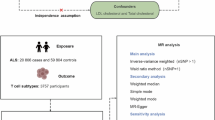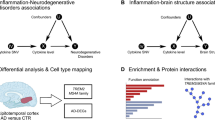Abstract
Objective
Genome-wide association studies (GWASs) revealed that variants of STAT3 are associated with multiple sclerosis (MS) risk. There are several studies showing the effect of ethnicity and genetic background on the characteristics of MS. Here, we aimed to investigate STAT3 gene expression status along with its two regulatory long non-coding RNAs, lnc-DC and THRIL, in order to compare the expression of these target genes among two different ethnicities in the east of Iran.
Methods
A case-control study was performed between two groups of MS populations in east of Iran. We recruited individuals with Kurdish ethnicity from North Khorasan and Sistani ethnicity from southeast of Iran. The peripheral blood mononuclear cells were obtained from all participants, and total RNA was extracted. The gene expression of the selected genes was evaluated by qPCR.
Results
The expression of THRIL in North Khorasan MS patients was significantly higher than controls (P = 0.03). The results of simultaneous analysis of expression of the target genes (STAT3, THRIL, and lnc-DC) in both ethnic groups failed to show any significant difference between the MS patients and controls (P > 0.05). In addition, the expression of STAT3 and THRIL genes in Sistani MS patients was statistically meaningful lower than healthy controls (P < 0.05).
Conclusion
To our knowledge, this is the first study that compared the expression of the STAT3 gene and its regulatory molecules between two ethnic groups of Iranian MS patients. We suggested that STAT3 and its associated molecules might be differentially expressed and regulated in MS patients with different genetic background.





Similar content being viewed by others
References
Milo R, Kahana E (2010) Multiple sclerosis: geoepidemiology, genetics and the environment. Autoimmun Rev 9(5):A387–A394
Ffrench-Constant C (1994) Pathogenesis of multiple schlerosis. Lancet 343(8892):271
Rieckmann P, Mäurer M (2002) Antiinflammatory strategies to prevent axonal injury in multiple sclerosis. Curr Opin Neurol 15(3):361–370
Shuai K, Liu B (2003) Regulation of JAK–STAT signalling in the immune system. Nat Rev Immunol 3(11):900–911
Alvarez JV, Frank DA (2004) Genome-wide analysis of STAT target genes: elucidating the mechanism of STAT-mediated oncogenesis. Cancer Biol Ther 3(11):1045–1050
Schindler CW (2002) Series introduction: JAK-STAT signaling in human disease. J Clin Invest 109(9):1133–1137
Darnell JE (1997) STATs and gene regulation. Science 277(5332):1630–1635
Yu H, Pardoll D, Jove R (2009) STATs in cancer inflammation and immunity: a leading role for STAT3. Nat Rev Cancer 9(11):798–809
Judd LM et al (2006) STAT3 activation regulates growth, inflammation, and vascularization in a mouse model of gastric tumorigenesis. Gastroenterology 131(4):1073–1085
Jadidi-Niaragh F, Mirshafiey A (2011) Th17 cell, the new player of neuroinflammatory process in multiple sclerosis. Scand J Immunol 74(1):1–13
Harris TJ et al (2007) Cutting edge: an in vivo requirement for STAT3 signaling in TH17 development and TH17-dependent autoimmunity. J Immunol 179(7):4313–4317
Liu X et al (2008) Loss of STAT3 in CD4+ T cells prevents development of experimental autoimmune diseases. J Immunol 180(9):6070–6076
Jakkula E et al (2010) Genome-wide association study in a high-risk isolate for multiple sclerosis reveals associated variants in STAT3 gene. Am J Hum Genet 86(2):285–291
Wang P et al (2014) The STAT3-binding long noncoding RNA lnc-DC controls human dendritic cell differentiation. Science 344(6181):310–313
Li Z et al (2014) The long noncoding RNA THRIL regulates TNFα expression through its interaction with hnRNPL. Proc Natl Acad Sci 111(3):1002–1007
Bode JG et al (1999) LPS and TNFα induce SOCS3 mRNA and inhibit IL-6-induced activation of STAT3 in macrophages. FEBS Lett 463(3):365–370
Qiu M-T et al (2013) Long noncoding RNA: an emerging paradigm of cancer research. Tumor Biol 34(2):613–620
Alikhah A, et al (2017) The role of lnc-DC long non-coding RNA and SOCS1 in the regulation of STAT3 in coronary artery disease and type 2 diabetes mellitus. J Diabetes Complicat
Heward JA, Lindsay MA (2014) Long non-coding RNAs in the regulation of the immune response. Trends Immunol 35(9):408–419
Atianand MK, Fitzgerald KA (2014) Long non-coding RNAs and control of gene expression in the immune system. Trends Mol Med 20(11):623–631
Qureshi IA, Mattick JS, Mehler MF (2010) Long non-coding RNAs in nervous system function and disease. Brain Res 1338:20–35
Bina P et al (2017) The expression of lnc-IL-7R long non-coding RNA dramatically correlated with soluble and membrane-bound isoforms of IL-7Ra gene in multiple sclerosis patients. Neurosci Lett 642:174–178
Albor C et al (2017) Ethnicity and prevalence of multiple sclerosis in east London. Mult Scler J 23(1):36–42
Sharafaddinzadeh N et al (2013) The influence of ethnicity on the characteristics of multiple sclerosis: a local population study between Persians and Arabs. Clin Neurol Neurosurg 115(8):1271–1275
Etemadifar M et al (2013) Epidemiology of multiple sclerosis in Iran: a systematic review. Eur Neurol 70(5-6):356–363
Cree BA et al (2005) Response to interferon beta-1a treatment in African American multiple sclerosis patients. Arch Neurol 62(11):1681–1683
McDonald WI et al (2001) Recommended diagnostic criteria for multiple sclerosis: guidelines from the International Panel on the diagnosis of multiple sclerosis. Ann Neurol 50(1):121–127
Livak KJ, Schmittgen TD (2001) Analysis of relative gene expression data using real-time quantitative PCR and the 2−ΔΔCT method. Methods 25(4):402–408
Spielman RS, et al (2007) Common genetic variants account for differences in gene expression among ethnic groups. 39(2):226
Perry JR (1975) Forced migration in Iran during the seventeenth and eighteenth centuries. Iran Stud 8(4):199–215
Kakhki MP et al (2015) Expression of suppressor of cytokine signaling 1 (SOCS1) gene dramatically increases in relapsing–remitting multiple sclerosis. J Neurol Sci 350(1):40–45
Baker BJ, Akhtar LN, Benveniste EN (2009) SOCS1 and SOCS3 in the control of CNS immunity. Trends Immunol 30(8):392–400
Li Y et al (2010) Disease-related expression of the IL6/STAT3/SOCS3 signalling pathway in ulcerative colitis and ulcerative colitis-related carcinogenesis. Gut 59(2):227–235
Welte T et al (2003) STAT3 deletion during hematopoiesis causes Crohn's disease-like pathogenesis and lethality: a critical role of STAT3 in innate immunity. Proc Natl Acad Sci 100(4):1879–1884
Haj MS et al (2015) Association study of four polymorphisms in the interleukin-7 receptor alpha gene with multiple sclerosis in Eastern Iran. Iran J Basic Med Sci 18(6):593
De Jager PL et al (2009) Meta-analysis of genome scans and replication identify CD6, IRF8 and TNFRSF1A as new multiple sclerosis susceptibility loci. Nat Genet 41(7):776–782
Hofman F et al (1989) Tumor necrosis factor identified in multiple sclerosis brain. J Exp Med 170(2):607–612
Acknowledgements
The authors gratefully acknowledge the contribution of the patients and healthy controls for their blood donations and Mrs. Masoumeh Heidary for help in preparing the samples of south participants.
Funding
This research received supports from North Khorasan University of Medical Sciences with grant numbers 93p790 and 95p920.
Author information
Authors and Affiliations
Contributions
M.P.K., N.R., and A.N. contributed to the conception and design of the study and data collection; A.A. and M.A. contributed to data analysis, and A.A., Gh.S., and M.B. contributed to writing and revising the manuscript.
Corresponding author
Ethics declarations
Ethical approval
All procedures performed here, including human participants, were in accordance with the ethical standards of the institutional research committee and with the 1964 Helsinki declaration and its later amendments or comparable ethical standards.
Informed consent
Informed consent was obtained from all individual participants included in the study.
Conflict of interest
The authors declare that they have no conflict of interest.
Additional information
Publisher’s note
Springer Nature remains neutral with regard to jurisdictional claims in published maps and institutional affiliations.
Rights and permissions
About this article
Cite this article
Pahlevan Kakhki, M., Rakhshi, N., Emami Aleagha, M.S. et al. Differential expression of STAT3 gene and its regulatory long non-coding RNAs, namely lnc-DC and THRIL, in two eastern Iranian ethnicities with multiple sclerosis. Neurol Sci 41, 561–568 (2020). https://doi.org/10.1007/s10072-019-04092-y
Received:
Accepted:
Published:
Issue Date:
DOI: https://doi.org/10.1007/s10072-019-04092-y




